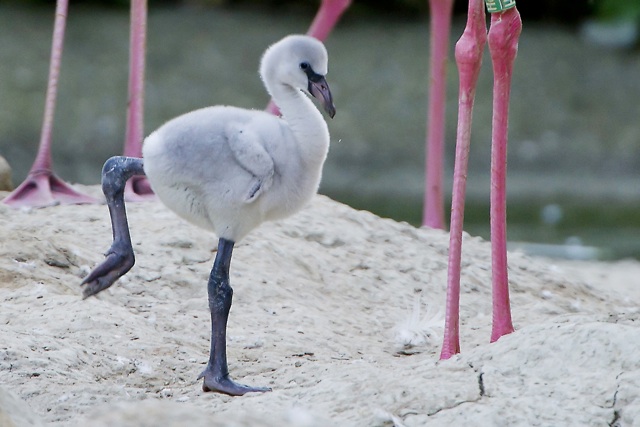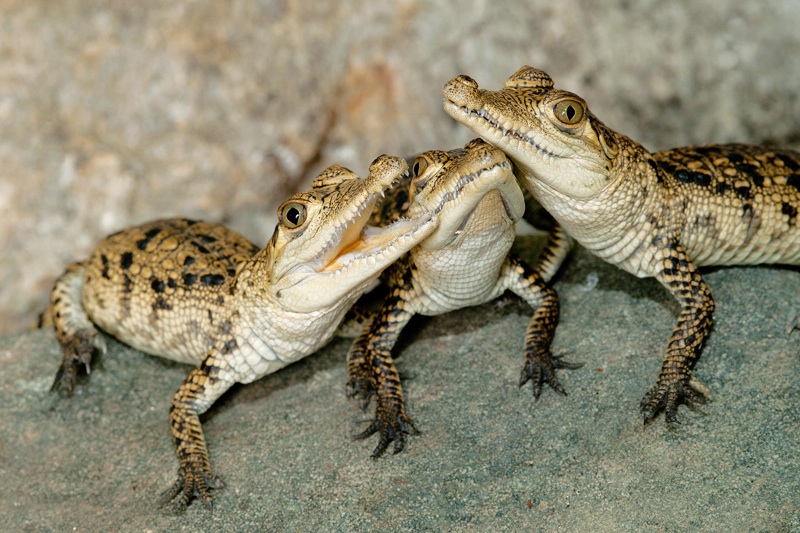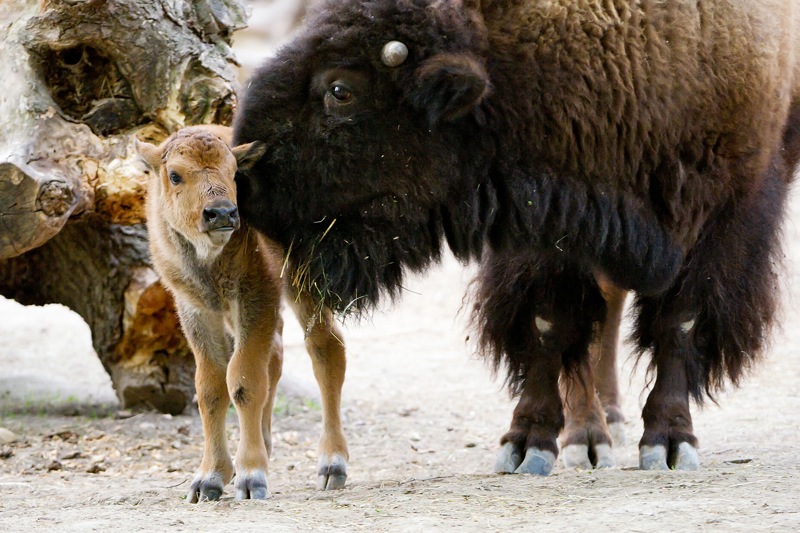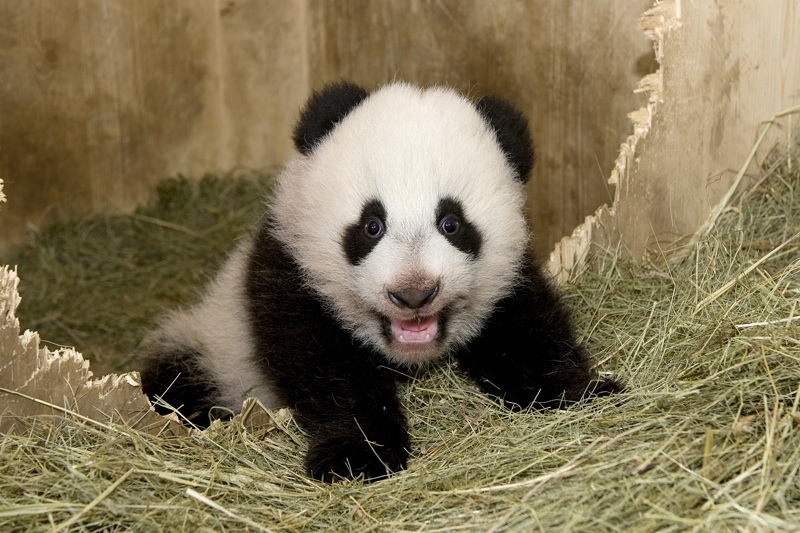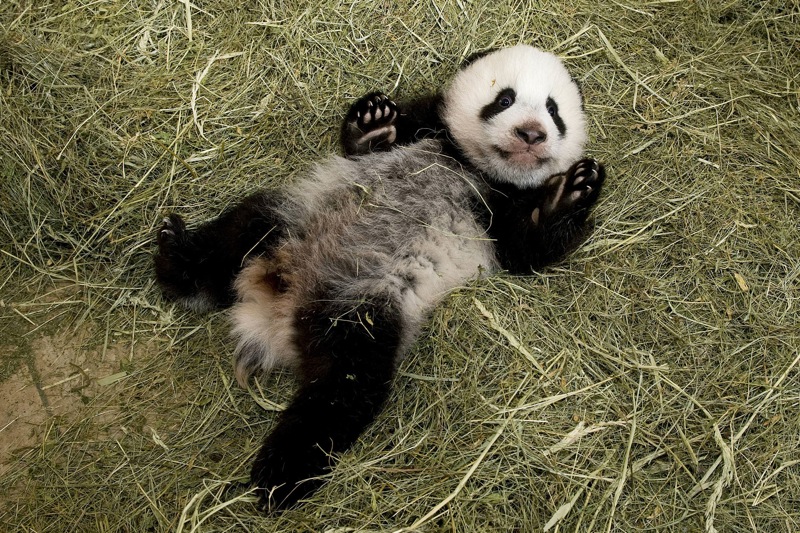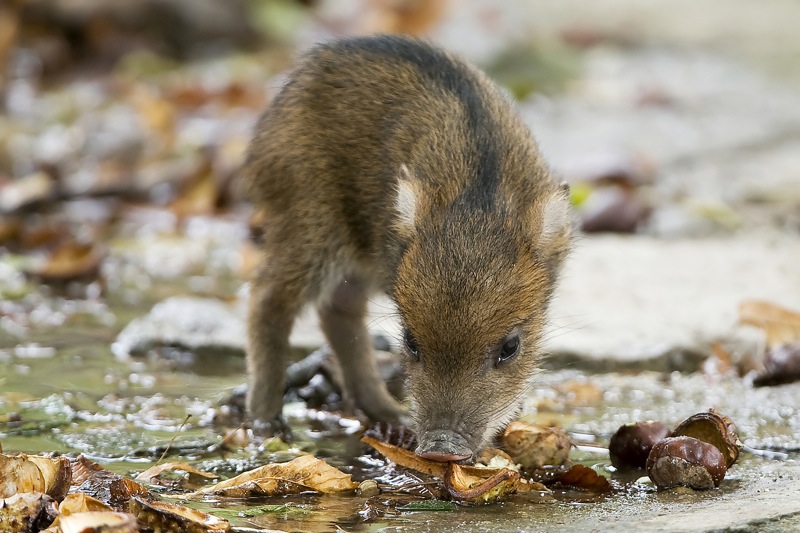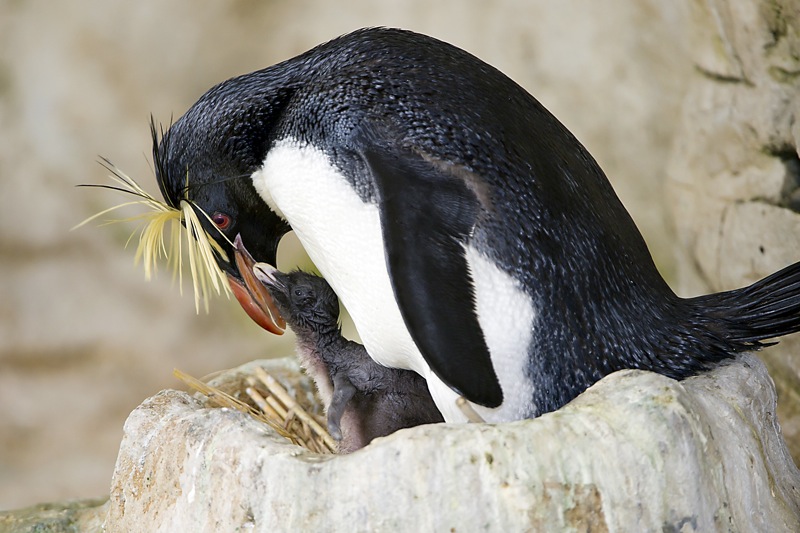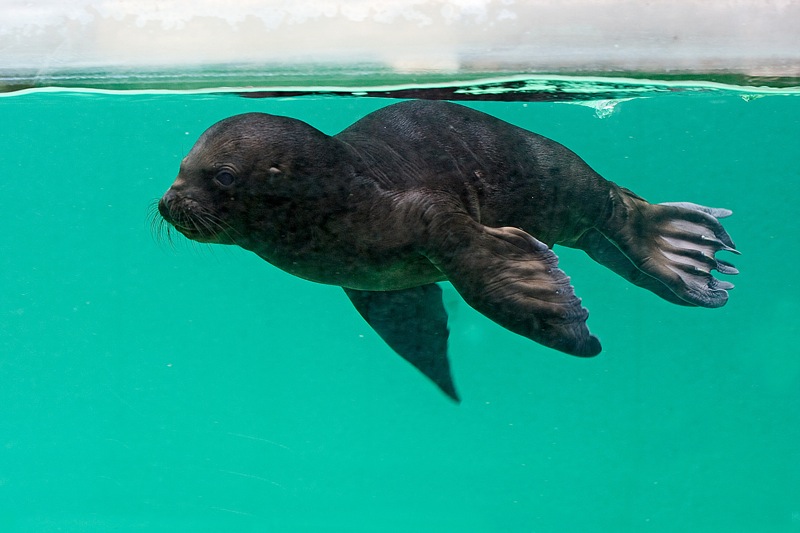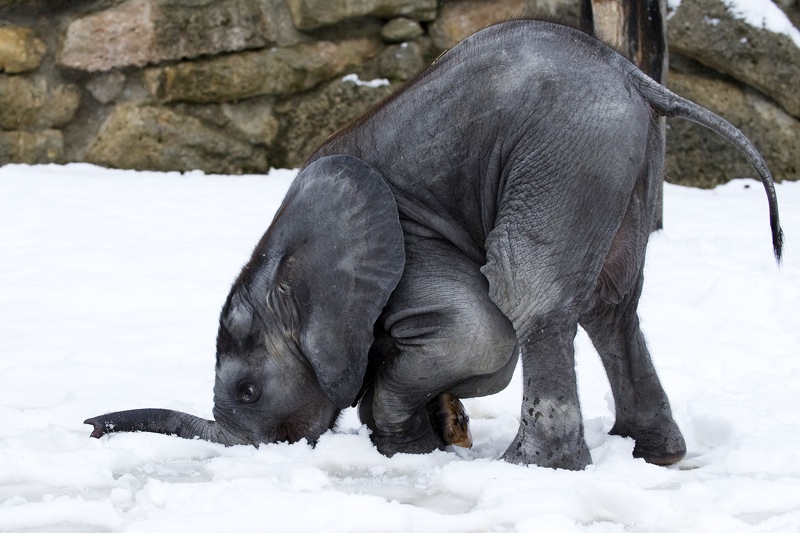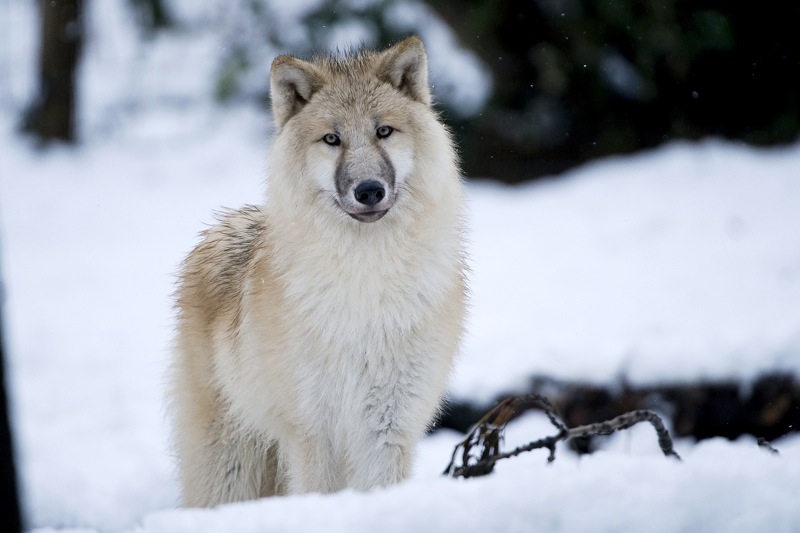It is ten years ago that I published the book “Big Animals in Schönbrunn” (“Große Tiere in Schönbrunn”) which Eva Menasse in the Frankfurter Allgemeine Zeitung then kindly described as “iconographic reference work“. Last year the Viennese publisher Christian Brandstätter asked me whether I would like to return to this playground for his series “Myth and Truth”. This book is being released these days, pleasantly enough in German (see first chapter auf Deutsch) and English (translated by Martin Kelsey), superbly tended and nursed by Elisabeth Hölzl and Barbara Sternthal. Küß die Händ’. Find below the first chapter.
From the Emperor’s Zoo to the Kingdom of the Animals
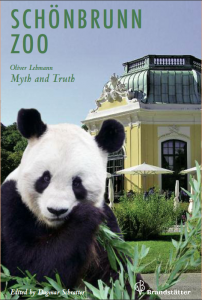 As we are in Vienna, it comes as no surprise to find a coffee house at the centre of Schönbrunn Zoo. And this is no ordinary coffee house. It is, in fact, the Emperor’s café. In 1759, Franz I Stephan of Lorraine arranged for a Breakfast Pavilion (in the backdrop of the cover) to be constructed in the Western part of the palace park right at the heart of his Menagerie, which was already stocked with animals at the time. No one could blame Franz I Stephan, the husband of Maria Theresa and the father of 16 children, for wishing to establish a haven of peace and quiet away from the splendour of the Baroque buildings and the strict Spanish court ceremony. And the structure he erected remains just as much of an eyecatcher as 250 years previously as it draws all visitors towards the centre of the 17 hectare site. It is worth taking a good look around before embarking on a tour of the grounds. The terrace of the octagonal Pavilion, famous for its ceiling frescos, wall panellings and pictures of animals, offers views of 12 animal enclosures and of the old administration building, in which animals were also housed until the mid-19th century.
As we are in Vienna, it comes as no surprise to find a coffee house at the centre of Schönbrunn Zoo. And this is no ordinary coffee house. It is, in fact, the Emperor’s café. In 1759, Franz I Stephan of Lorraine arranged for a Breakfast Pavilion (in the backdrop of the cover) to be constructed in the Western part of the palace park right at the heart of his Menagerie, which was already stocked with animals at the time. No one could blame Franz I Stephan, the husband of Maria Theresa and the father of 16 children, for wishing to establish a haven of peace and quiet away from the splendour of the Baroque buildings and the strict Spanish court ceremony. And the structure he erected remains just as much of an eyecatcher as 250 years previously as it draws all visitors towards the centre of the 17 hectare site. It is worth taking a good look around before embarking on a tour of the grounds. The terrace of the octagonal Pavilion, famous for its ceiling frescos, wall panellings and pictures of animals, offers views of 12 animal enclosures and of the old administration building, in which animals were also housed until the mid-19th century.
Selection of images from the book by Daniel Zupanc for Schönbrunn Zoo
These structures stretch out from the Pavilion itself like the segments of a circle, and pandas, giraffes, Somali blackhead sheep, antelopes and hippopotamuses can all easily be made out. The historic Monkey House rises in the background, whereas a glance in almost the opposite direction will reveal the new management block and the adjacent tunnel leading to the ORANG.erie, the home of the great apes at Schönbrunn. Sprawling up the hill are the woods surrounding the »Tirolerhof«, which houses a number of animals which, although not strictly exotic, display remarkable characteristics. Spectacled sheep, Pinzgauer cattle, Sulmtaler chickens and Montafon brown cattle have all made their home in the former palace park of the Habsburgs. The shrill expectant shrieking of the young indicates feeding time in the »Polarium«, where the seals and their neighbours the penguins exhibit both reliability and pleasure in the daily show programme they stage with the help of their keepers. The voices of the young mingle with the trumpeting signals of the elephants arriving to stake their claims on their open space after completion of their morning ablutions.
A little further on, the roof of the Rain Forest House is also visible from the terrace of the Pavilion. Borneo is brought to life under the long glass skin of the building. Mangrove swamps and terraced fields lead up to the treetops of the primeval forest. The climate of this urban rain forest located at 48 degrees North corresponds to the prevailing conditions near the equator down to the tiniest detail. The 400 types of plant and the impressive array of animals are not the least of the factors enabling this effect to be achieved. The latter includes turtles, dwarf otters, mudskippers, powerful looking phasmatodea and magnificent geckos. Visitors who pluck up the courage to enter the dark grotto will be rewarded with the sensation of a puff of wind across their skin from the wings of the bats which fly by and miss them by a hair’s breadth. Fairy bluebirds, purple crowned fruit doves, white-rumped shama and bluecrowned hanging parrots flutter in the treetops. Next door, two grey herons rise into the sky to make their way over to the rhinoceros enclosure following a picnic at the pelican pool. The dull roars of the big cats set a final note, presumably an attempt to make it absolutely clear who is in charge.
Approximation to an ideal zoo
The zoo is not a museum, even if, as part of the whole of the site at Schönbrunn, it has been a UNESCO World Heritage Site since 1996. Neither does it have any ownership rights in the animals it houses. There are a number of reasons for this. The animals may form part of a global species conservation programme and may even be due for release into the wild at some point in the future. They may have been provided by other zoos or be on loan from an institution or another country. Or they may simply be part of our natural heritage, in which case zoos are often the only way in which a species can be saved from final extinction.
Zoo Director Dagmar Schratter explains the crux of the matter. »Good zoo-keeping is always a balancing act. The ideal environment for the animals would not necessarily be ideal for the visitor. Visitors need to have the opportunity to see an animal and to build up a relationship with it. By the same token, however, the animals need a place to where they can withdraw. The purchase of an entrance ticket does not give visitors the right to see any animal at any time. There is no such thing as the ideal zoo. There are, how – ever, criteria which make a good zoo. A good zoo is a zoo which is managed in a cost-effective and sustainable manner, a zoo which takes its nature and species preservation responsibilities seriously and a zoo which fulfils the stipulations of the World Association of Zoos and Aquariums. A good zoo is also a zoo where the animals, visitors and staff all feel at ease. A zoo always serves both animals and people.« The facts bear out the views of Dagmar Schratter and her staff, who number just under 200. Around 2.2 million people visit the zoo each year. This makes Schönbrunn Zoo one of the most popular destinations in the country for paying visitors alongside Schönbrunn Palace itself. This is a key element in balancing the annual budget of approximately €16 million, something which the zoo constantly achieves.
The March 2011 Index lists an inventory of precisely 8,504 animals. These include 5,663 vertebrates in 874 different species from sugar glider to neurergus and 2,841 non-vertebrates in 145 species ranging from horseshoe crab to daisy anemone, which are simple cnidaria. All animals have been precisely counted and divided into male and female wherever possible. The only column against which »Unknown« has been entered in respect of numbers is that which refers to the Southern wood ant.
Good breeding
And new animals are added virtually every day, as a randomly selected investigation of the birth statistics between the summer of 2010 and the summer of 2011 reveals. On 23 August 2010, Fu Hu was born, already the second giant panda to be sired at Schönbrunn. After one month, he was about the same size as a guinea pig and weighed around 1200 grammes. During this phase, Fu Hu was still being warmed by his mother Yang Yang, who held him between her huge paws for most of the time. Every four hours, the young bear cuddled up to her breast and drank deeply whilst smacking his lips loudly.
In October 2010, three sets of collared peccary twins were born within a few days. Although peccaries seem to resemble a kind of small wild boar at first glance, they are actually highly adaptable creatures which live in the savannahs and rain forests of Central and South America. Immediately following the birth of their young, adult peccaries mark them with a secretion, which comes from glands located under their eyes and on their back. This special aromatic note strengthens family ties and enables the peccaries to recognise their relatives.
The male roan antelope Rasco was born on 8 October 2010, complete with the very large ears which characterise the species. After the common eland, roan antelopes are the largest antelopes in Africa. Their Latin name hippotragus equinus makes reference to their horse-like snout which they protrude in times of danger. The loss of their natural habitat is leading to a decline in their numbers worldwide. The protection and preservation of species is one of the most important tasks undertaken by the zoo. For this reason, nothing is left to chance when it comes to selecting the right partner for an animal. Breeding is coordinated at an international level. Rasco’s own mother Emi was herself born at Schönbrunn ten years ago, whereas his father Ken came to Vienna from Dortmund in 2009.
A premiere event took place in November 2010 when three young Mexican crocodiles successfully hatched. These were the first crocodiles of any kind to be born in the history of the zoo. The newly born crocodiles were light gold and black in colour, measured just 30 centimetres in length, weighed around 80 grammes and had tiny sharp teeth. Their menu consisted of insects and earthworms. This success was prefaced by an exercise programme which had been in place since 2008 and had been developed by the keepers in conjunction with a specialist trainer. The aim was both to enrich the daily lives of the crocodile pair Puebla and Durango and to help make sure that the female remained undisturbed whilst brooding.
A two-toed sloth was born on 6 December 2010, only the second time a specimen of this unusual species had been bred at Schönbrunn. The two-toed sloth spends its life hanging upside down in the trees. It was not possible to determine the gender of this particular offspring (which ultimately turned out to be male) until six months later since, like every other aspect of the life of a sloth, growth progresses extraordinarily slowly.
Exotic animals from close and afar
A »joey« popped his head out of his mother’s pouch for the first time in January 2011. Born five months previously following an extremely short gestation period of five weeks, the young kangaroo had begun life as a hairless, pinkcoloured and scarcely developed bundle which had crawled from his mother’s birth opening into the marsupium and begun to suck hard on a teat. Postnatal development, which in the case of other mammals occurs in the womb, then took place in the pouch.
Three naked and blind meerkats were born on 6 February 2011. They spent a month in the protective environment of their burrow before emerging to explore the world around them. At this time of life, the triplets in question were still being suckled by their mother before moving on to consume their first insects a few weeks later. Meerkats live in social groups in the savannahs of Southern Africa and look after their young together. Only a few days after birth, another adult animal will begin to support the mother by taking on the role of babysitter.
The Pustertal pied cattle housed in the »Tirolerhof« also produced an offspring on 4 March. This is a rare breed, which sports black and white or brown and white markings and which was in particular demand in the dairies of Vienna during Imperial times. This gave rise to their alternate designation of »Viennese cow«. Following neglect of the breeding process, numbers had fallen to only 77 animals by the 1980’s. Schönbrunn Zoo has succeeded in preserving this threatened domestic species.
Menewa, the new arrival in the bison enclosure, is a significantly heavier specimen. As a fully grown bull, he will later tip the scales at 800 kilogrammes. Menewa’s father is the 19-year old bull Lakota, who was given to the zoo by the Lakota Indians of South Dakota in 1992 when he was six months old. The acquisition of Lakota was important in international breeding terms because of the new genetic material he was able to provide. He now has around 40 descendants distributed right across Europe.
16 Northern bald ibis chicks hatched in April 2011. Visitors were able to observe them being reared by hand until the end of May. Every two hours, Steffi Heese and Daniela Trobe fed the young birds with insects and a meat broth. A group of committed Austrian researchers is attempting to provide zoo-reared birds with the knowledge necessary to enable them to survive in the wild. This is no easy matter. The Northern bald ibis is a migratory bird. In order for successful reintegration to take place, the human foster parents need to use ultra-light aircraft to show the young birds the flight route to their wintering areas in Italy. For this reason, they need to become accustomed to human contact. The two bird experts spend day and night with their protégées, who become familiar from day one with the calls which will be later be used to lure them from the aircraft.
May brought an addition to the pink flamingo population as 13 chicks were hatched. The first of these soon fled their nests, which actually resemble mud cones, to be jointly looked after by the adult birds in a kind of kindergarten arrangement whilst further eggs were being brooded. Parents have no difficulty in finding their own offspring within the group at feeding time. During their first few months of life, the young birds are fed on a special high-fat and high-protein excretion from the glands in the adult flamingo’s gullet.
The brooding process was equally successful for the redcrowned crane, a highly endangered species which originates from Eastern Asia. A chick was hatched on 9 May, exhibiting the breed’s typical golden yellow feathering and oversized feet. Red-crowned cranes are precocial birds. As soon as it had hatched, the chick was walking through the fields alongside his parents copying the way in which they used their long beaks to pick out insects, earthworms and grains. In Japan, the red-crowned crane is considered a lucky omen and symbolises long life. In actual fact, its own survival is at stake. Large parts of its natural biotope are being converted into farmland, meaning that only about 2,000 birds still survive in the wild today. Schönbrunn is a participant in the European Endangered Species Programme and, extremely unusually for a zoo, regularly produces young.
At the same time, two male and two female reindeer were born within a few days of one another, the first young for three years. The responsible party here was the new reindeer bull Hank, who obviously soon struck a chord with the reindeer females in the enclosure following his arrival from Gelsenkirchen Zoo in September 2010. In June 2011, four young ground squirrels also emerged for the first time from the cave-like labyrinth of their underground burrow located in the garden of the Desert House dating back to 1903. Standing on their hind legs, the animals explored their surroundings, nibbled on stalks of grass or sought out the feeding bowl from which, just like adult ground squirrels, they were also helping themselves to vegetables, grain and the occasional insect. Whilst all this was going on, their mothers kept watch over them, always on the lookout for any potential enemy. If even the merest whiff of any danger occurs, they emit a piercing whistle and the entire ground squirrel colony will then shoot back into their complex network of underground passageways and caves.
A unique combination
Schönbrunn Zoo is a unique combination of seemingly contradictory elements: imperial splendour and globally networked species protection, magnificent baroque surroundings and excellent scientific research, an entertainment facility and an objective to raise ecological awareness, professional management and dedicated animal care. It is precisely this combination which led to Schönbrunn once again being voted the best zoo in Europe for 2010. British zoo expert Anthony Sheridan compared 80 scientifically managed zoos in Europe on the basis of extensive questionnaires, annual reports and conversations with the zoo directors themselves. The quality evaluation takes place in accordance with 26 criteria, including animal keeping, diversity of species, protection of endangered species, investments, marketing, visitor numbers, education and staff. In the category »Zoos with more than one million visitors per year«, Schönbrunn achieved 83.5 percent of the possible points, a better score than any other zoo on the continent. One of the many characteristics Sheridan identified at Schönbrunn Zoo was a rare species indeed. In the category covering the major European zoos, there are only three female directors. Dagmar Schratter has been one of them since 2007. Her comment on the awards Schönbrunn has received very much reflects the motto underlying her work. »If we can fire the enthusiasm of our visitors for the animal world, we also foster awareness that this is a world which needs to be protected. The prize we have won is based on a whole range of factors. For this reason, I would like to express my thanks to every single member of staff.«
„Schönbrunn Zoo. Myth and Truth“ by Oliver Lehmann, translated by Martin Kelsey, Christian Brandstätter Verlag, 112 pages with 150 illustrations; 9,90 Euro
